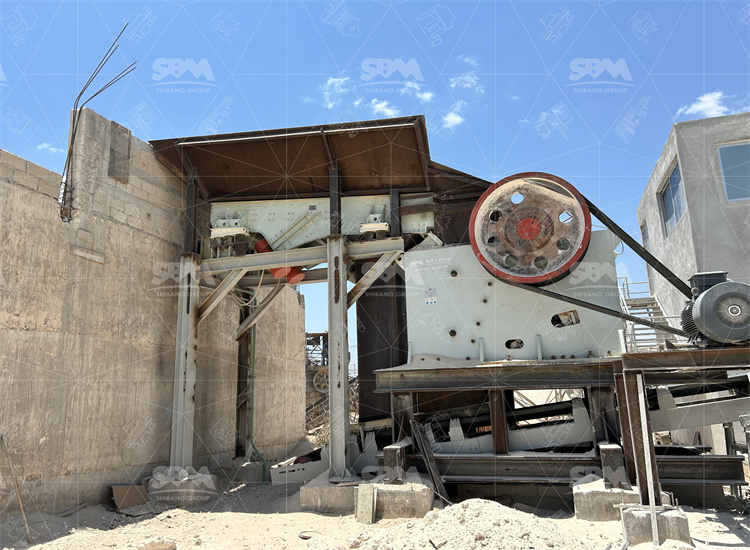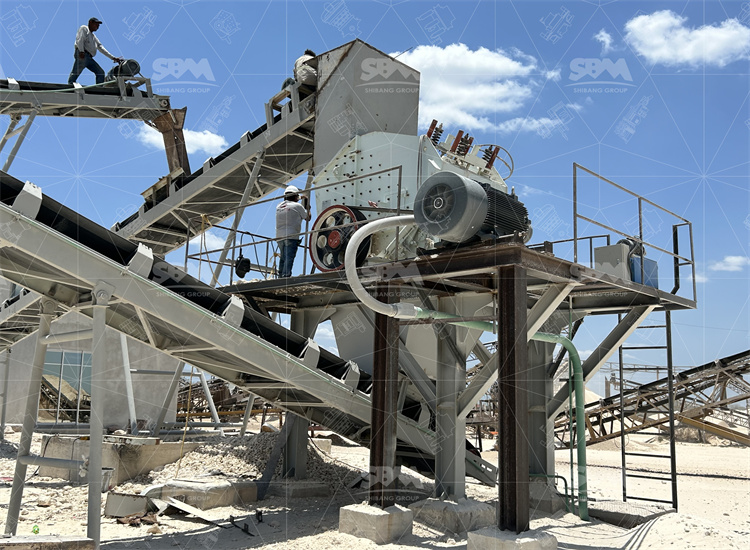Compact, reliable stationary crushing lines deliver steady aggregates. This guide explains design, operation, and selection for professional quarry and mining use, with measured data, real cases and actionable steps.
A stationary stone crusher plant is a fixed installation that reduces rock size using a sequence of crushers and a screening system. It converts run-of-mine feed into graded aggregate fractions for concrete, roadbase, and asphalt. The system normally includes a primary crusher, secondary and tertiary crushers, conveyors, and vibrating screens. moreover, it is optimized for continuous duty,; high availability and predictable throughput.

Feed enters the hopper and passes a vibrating feeder. The primary crusher (jaw or gyratory) reduces large boulders. Secondary crushers (cone or impact) perform further reduction. Screens sort material by size, recirculating oversize for re-crush. The loop continues until product meets spec. This compressive-and-impact sequence maximizes efficiency while controlling fines. in many plants, closed-circuit recirculation improves shape and consistency.
Main units: jaw crusher (primary), cone crusher (secondary/tertiary), VSI/impact for shaping, vibrating screens, feeders, conveyors, and dust suppression. Critical parameters include crushing ratio, CSS/OSS (closed/open side setting), chamber type, eccentric speed, motor power matching and rated throughput. Jaw crushers typically deliver reduction ratios of 1:2 to 1:3; designers size jaw gape so max feed is about 80% of gape.
Cone crushers rely on compressive crushing; they are energy efficient for secondary and tertiary duties. Cone performance strongly depends on CSS, eccentric throw and speed; modelling shows energy use ties to compressive pressure and displacement.
Below is a compact parameter table for common stationary lines, used for initial sizing and client discussions.
| Unit | Feed / Product (mm) | Motor Power (kW) |
|---|---|---|
| Jaw crusher (primary) | Max feed 600-1200 / product 80-200 | 75-300 |
| Cone crusher (sec/tert) | Feed 40-300 / product 5-50 | 90-750 |
| VSI / Impact | Feed 0-80 / product 0-30 | 55-450 |
Design capacity ranges from 50 t/h to over 1,500 t/h. For example, stationary cone lines can reach>1000 t/h when paired with high-power motors and large feed openings. Screening efficiency depends on aperture, stroke and inclination; flip-flow and composite screens help separate wet fines.
Operational metrics we track on-site: energy use (kWh/t), availability (%), mean time between failures (MTBF), and routine maintenance intervals. Typical energy consumption for compressive crushers is lower than for high-speed impact units; published models quantify the relation between operating parameters and energy draw.

Start with feed characterization: size distribution, abrasiveness (Mohs), moisture, and bulk density. Then: select primary crusher with gape ≥1.25× max feed, choose secondary/tertiary crushers to meet product gradation, and specify screen decks to capture target fractions. Use closed-circuit control to stabilize output, and include recirculating conveyors for oversize.
Match motor power to crusher rating plus service factor. Eccentric speed, stroke and CSS determine torque demand. For heavy-duty lines, variable-frequency drives (VFDs) permit soft-starts, load control, and energy savings. furthermore, automation with load-sensing protection extends liner life and lowers unplanned stops.
Representative operational targets (field-validated): energy 0.6–1.8 kWh/t (varies by rock type); planned maintenance every 1,000–2,000 hours for wear part inspection; liner replacement intervals depend on abrasivity. Fault rates typically fall below 3% when OEM procedures are followed;; higher rates reflect poor feed control or neglect.
Select screen type per material and moisture. For coarse, inclined linear screens excel. For sticky or wet fines, flip-flow or banana screens reduce blinding. Aperture and deck area determine throughput per the accepted screening theories; modern DEM studies confirm aperture optimization improves separation efficiency.
1) Level concrete base, 2) fixed anchor points for crushers, screens and motors, 3) align shafts and belts, 4) install lubrication circuits, 5) run dry mechanical checks, 6) perform short feed trials and set CSS for target product. Document baseline vibration and power curves. Start with conservative feed and gradually increase to design load.
Keep critical spares: jaw plates, cone liners, mantle, concaves, eccentric bushes, screen panels and bearings. Schedule daily visual checks, weekly lubrication audits, monthly liner wear mapping. Use predictive monitoring (vibration, oil analysis) to reduce unexpected stops. This lowers total cost of ownership and improves uptime.

Case A — 500 t/h granite plant. Location: inland aggregate quarry. Scheme: primary jaw + secondary cone + tertiary VSI + triple-deck screens. Equipment list: 1×PE900×1200 jaw, 1×CH660 cone, 1×VSI5X, 3×S5X screens, conveyors, wash. Problem: poor particle shape and high fines. Solution: added VSI shaping stage and closed-circuit screening. Result: product gradation met highway spec; plant reached steady 500 t/h with availability >92%. Customer praised fast installation and low dust design during wet season.
Case B — 1,000 t/h limestone plant. Location: high-demand highway project. Scheme: heavy-duty primary jaw, two-stage cone crushing, sand making circuit and water recycling. Equipment: HST cone, VSI, S5X screens. Outcome: achieved 1,000 t/h peak, enclosed conveyors reduced noise and emissions, sewage treatment met local regulation. Client feedback: installation smooth, commissioning within schedule, maintenance intervals matched specs.
Step 1: Define production target and product sizes. Step 2: Characterize feed rock. Step 3: Choose primary type (jaw for large blocky feed). Step 4: Select secondary/tertiary crushers for desired shape. Step 5: Design screening layout and recirculation. Step 6: Size motors and protection. Step 7: Plan spares and monitoring. This process reduces risk and, thus, shortens commissioning time.
CapEx and OpEx depend on capacity and automation. Evaluate returns by comparing throughput, product value and operating cost per tonne. Use measured kWh/t and wear part consumption to model payback. Do not rely on anecdotal numbers; instead run a site-specific estimate.
A: Often caused by too small CSS, excessive impact energy or poor screen design. Correct by increasing CSS slightly, adjusting rotor speed or by adding a screening and recirculation loop. Also check feed gradation consistency.
A: Use compressive crushing for brittle rocks, optimize CSS and speed, use VFDs, and reduce idle-run times. Proper feed control lowers specific energy and extends liner life.
A: Typical tertiary cone rebuilds after 10,000–20,000 operating hours depending on rock. Primary jaw liner life varies widely; monitor wear profiles and plan replacements to avoid emergency stops.

Yes, when you design redundancy, perform scheduled maintenance and monitor condition. however a planned downtime window is practical for major servicing.
Oversize boulders beyond jaw gape need presplitting or hydraulic breakers. Wet, sticky feed may require scalping and wash circuits to avoid screen blinding.
Use VSI shaping or controlled cone crushing, plus multi-deck screening to remove flaky particles. shaping improves market value for asphalt and concrete sand.
Design based on feed, capacity and product needs. Prefer compressive crushers for energy efficiency; add VSI for shape when required. Include adequate screening, automation and predictive maintenance to lower cost per tonne. Finally, validate with pilot tests and track kWh/t, availability and wear rates to tune operations. For customized schemes, XinHai engineers provide on-site evaluation and detailed layout to match your quarry conditions,; ensuring predictable performance and long service life.
Whatsapp:+8617329420102
Email: [email protected]
Address: No. 1688, Gaoke East Road, Pudong new district, Shanghai, China.
Online Service : Get Price
We value your feedback! Please complete the form below so that we can tailor our services to your specific needs.
